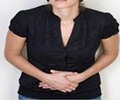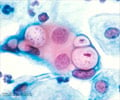- A Unique Sequence Is Essential for Efficient Multidrug Efflux Function of the MtrD Protein of Neisseria gonorrhoeae - (https://pubmed.ncbi.nlm.nih.gov/34465021/)
Gonorrhea / Clap
Gonorrhea is a very common sexually transmitted disease (STD) caused by a bacterium/superbug called Neisseria gonorrhoeae.
It is spread during sexual intercourse - vaginal, oral, and anal. Most often, gonorrhea is found in younger people (aged 15-30 years) who have multiple sex partners. It can also be spread from mother to child during pregnancy or childbirth.
The disease is deemed as a major public health burden worldwide, with a rising prevalence of nearly 87 million new infections per year.
Gonorrhea does not always cause symptoms. In men, it can cause pain and burning sensation when urinating, and discharge from the penis. In women, gonorrhea can cause pain when urinating, bleeding between periods, and yellowish discharge from the vagina. If left untreated, it can lead to complications like epididymitis (inflammation of the tube at the back of the testicle) in men and pelvic inflammatory disease (infection of the female reproductive organs) in women, which causes infertility.
Laboratory tests like gram stain, culture tests, or DNA tests are useful to diagnose gonorrhea.
Gonorrhea can be cured with antibiotics. Correct usage of latex condoms greatly reduces but does not completely eliminate the risk of transmission of gonorrhea.
What are the Causes of Gonorrhea?
Gonorrhea is caused by a bacterium called Neisseria gonorrhoeae.
A person can get infected with gonorrhea by having any kind of sexual contact with an infected person. It can also be spread from an untreated mother to her baby during childbirth.
The bacteria can grow and multiply quickly in moist, warm areas of the body such as the cervix, uterus, and fallopian tubes in women, and urethra in both sexes. It can also grow in the mouth, throat, eyes, or rectum.
People who are more likely to develop this infection are -
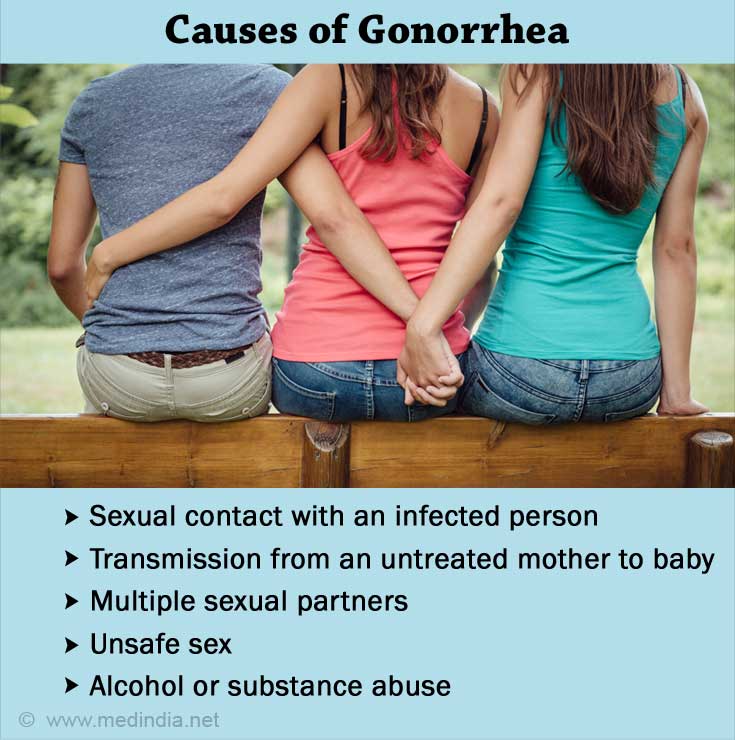
- Those with multiple sexual partners.
- If one of the partners has a past history of any sexually transmitted infection.
- People who indulge in unsafe sex and do not use a condom during sexual intercourse.
- Those who indulge in alcohol or use illegal substances.
What are the Symptoms of Gonorrhea?
About 10-15% of infected men and 80% of infected women may have no symptoms.
Symptoms of gonorrhea usually appear within 2 to 14 days after infection. They may be totally unaware that they have caught the infection. This increases the risk of transmission.
Symptoms of gonorrhea in men include-
- Painful and burning urination
- Increased urinary frequency
- Pus discharge from the penis
- Pain in the testis
- Swollen testicles
- Anal itching and occasional painful bowel movements with fresh blood on the feces
- Mouth sores
- Sore throat (gonococcal pharyngitis)

Symptoms of gonorrhea in women include-
- A yellowish vaginal discharge
- Redness and swelling of the genitals
- Burning or itching of the vaginal area
- Excessive bleeding during the menstrual period or bleeding between periods.
- Painful and burning urination
- Painful intercourse
- Pain in the lower abdomen
Symptoms of rectal infection in both men and women include -
- Pus-like discharge from the anus
- Pain in the anal region
- Constipation and bleeding
If the infection spreads to the bloodstream, it may cause fever, joint pain, and sparse peripheral rash.
How can we Diagnose Gonorrhea?
Laboratory tests like gram stain, culture tests, or DNA tests are available to diagnose gonorrhea.
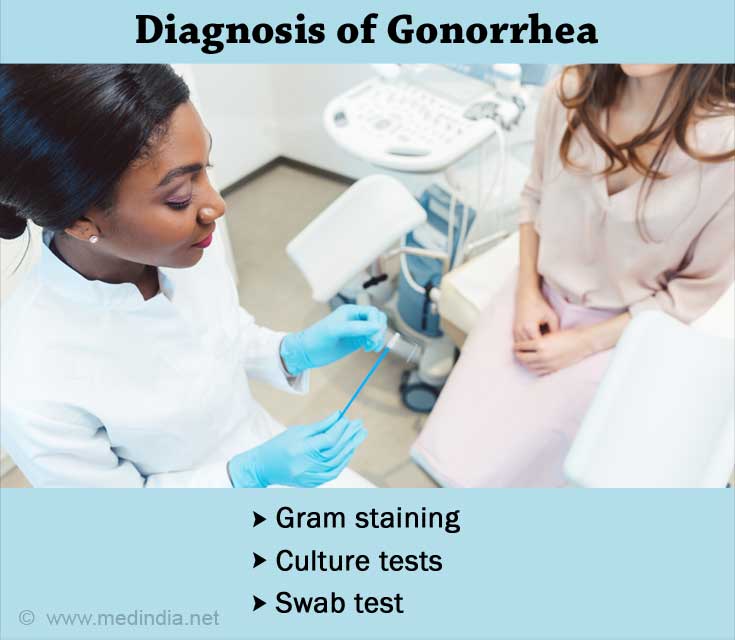
Gram Staining
A healthcare provider can obtain a sample of tissue or fluid from the infected mucus membrane (cervix, urethra, rectum, or throat) and send the specimen to a laboratory for analysis. In the laboratory, this smear is stained with a dye and the bacteria are viewed through the microscope. Although this test is quick, it is not very reliable.
Culture Test
The culture test involves placing a sample of the discharge onto a culture plate and incubating it for up to two to three days to allow the bacteria to multiply. This test provides absolute proof of infection. Cultures can provide a preliminary diagnosis within 24 hours and a confirmed diagnosis within 72 hours.
The samples for this test may be obtained from the cervix of women, urethra of men, throat, rectum, joint fluid, or blood, depending on the likely site of infection.
Detection of Bacterial Genes
Frequently, doctors use urine or cervical swabs for a new test that detects the genes of the bacteria.
How can Gonorrhea be Treated?
Gonorrhea is treated with antibiotics. Gonorrhea can be cured with proper treatment. Medicines will stop the infection but will not repair any permanent damage done by the disease.
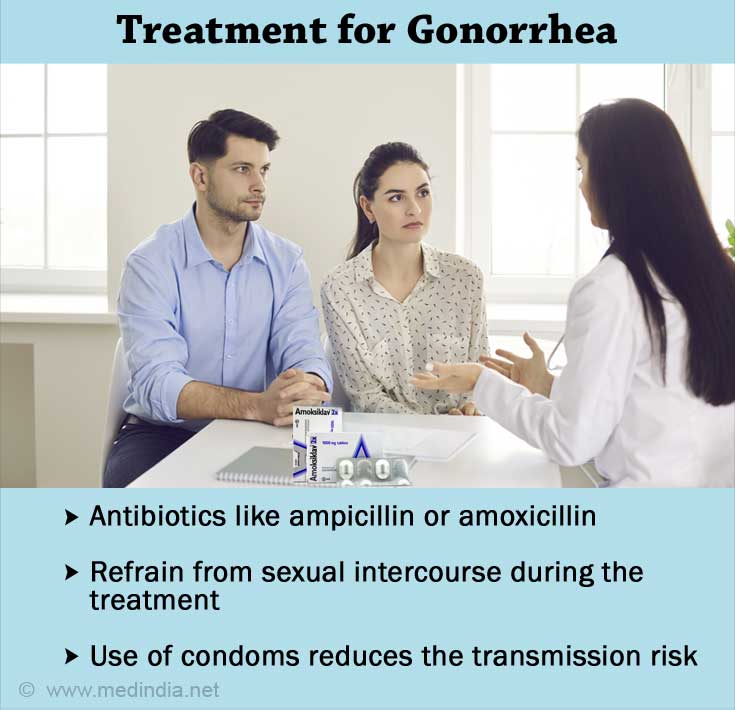
Penicillin derivative antibiotics such as ampicillin or amoxicillin are recommended for the treatment of gonorrhea. Since resistance to penicillin is increasing, other antibiotics can be given like ceftriaxone or spectinomycin.
Women who are pregnant should not be given doxycycline and are usually given an alternative antibiotic such as erythromycin.
All medications should be taken as prescribed, and the infected person should refrain from sexual intercourse during the course of treatment.
It is also important to locate and test the sexual partners of the infected person and treat them to prevent the further spread of gonorrhea.
Future Treatment Options
Resistance to Treatment
Antimicrobial resistance in Neisseria gonorrhoeae has reached an alarming level in today’s era. It has been ranked as one of 12 antimicrobial-resistant bacterial species that pose the greatest risk to human health as per The World Health Organization (WHO).
Experts fear that the dangerous condition would present the superbug quickly become untreatable. Subsequent treatment failures would then ultimately lead to expanded medical costs and a decrease in human general and reproductive health.
This may compute to the prevailing load of the disease which mandates the demand for medical researchers around the world to pursue alternative treatments.
‘Chink in Armor’ to Combat Superbug
Hence scientists at Flinders University and the Australian National University have examined the prime mechanism for antimicrobial resistance in this crafty organism, as per the study “A unique sequence is essential for efficient multidrug efflux function of the MtrD protein of Neisseria gonorrhoeae”, published in the journal mBio.
“We need to find the strengths and weaknesses in these species and in this study we have focused on the manner by which drugs are pumped out of these cells which helps the superbug become more resistant and able to survive treatment by multiple drugs,” says lead author Flinders University Professor of Microbiology Melissa Brown.
The team has identified a region unique to the drug pump that plays a role in positioning the protein in the surface of the bacteria enabling it to function optimally. The study thus paves the way for the future target for antibiotic or antimicrobial development in treatment options.








